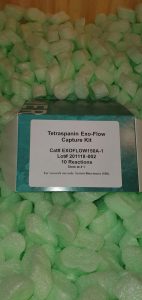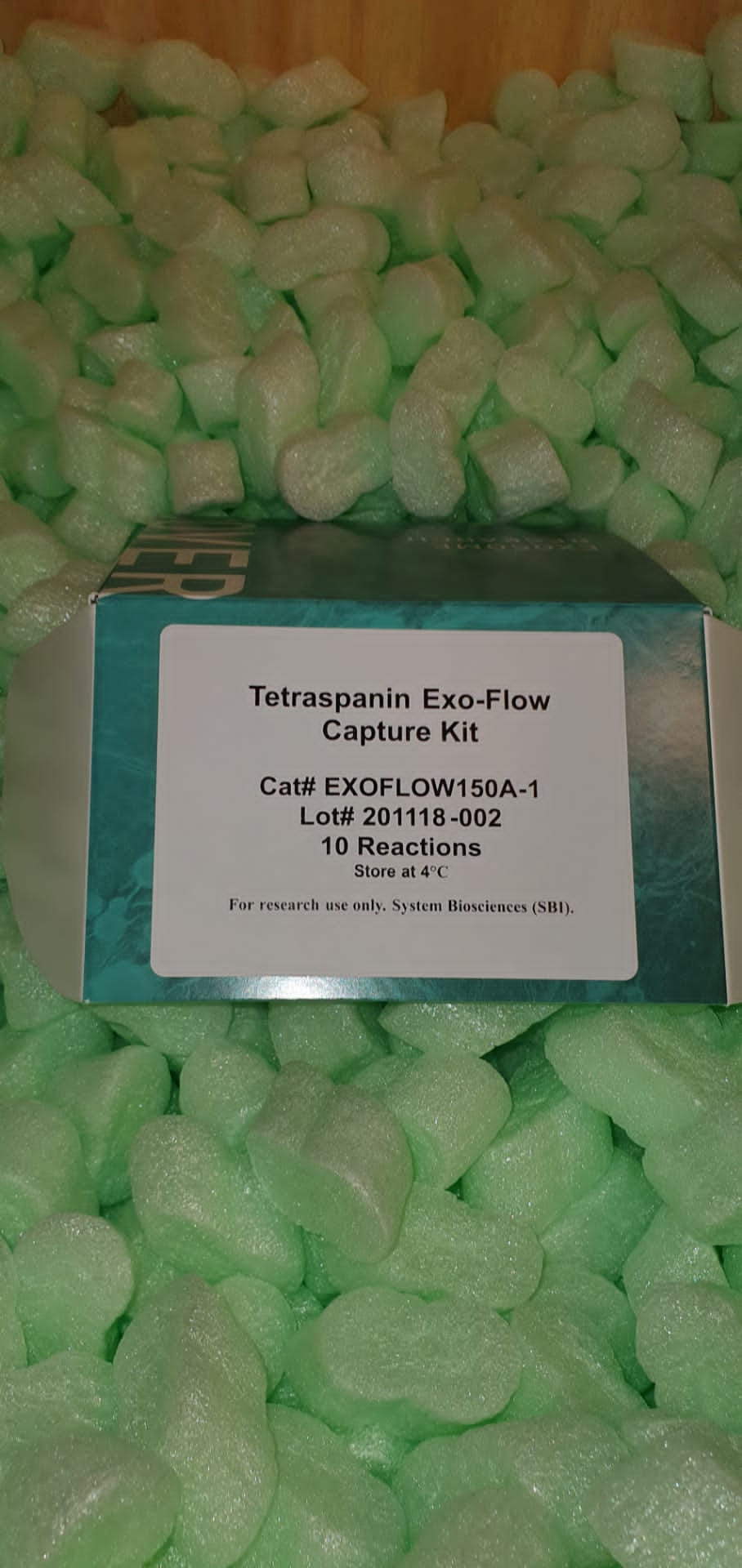The long-lasting international COVID-19 pandemic calls for well timed genomic investigation of SARS-CoV-2 viruses. Right here we report a easy and environment friendly workflow for entire genome sequencing using one-step RT-PCR amplification on a microfluidic platform, adopted by MiSeq amplicon sequencing. The strategy makes use of Fluidigm Built-in Fluidic Circuit (IFC) and devices to amplify 48 samples with 39 pairs of primers, together with 35 customized primer pairs and 4 further primer pairs from the ARTIC community protocol v3. Utility of this technique on RNA samples from each viral isolate and medical specimens show robustness and effectivity of this technique in acquiring the complete genome sequence of SARS-CoV-2.
A number of pathogens repeatedly threaten viticulture worldwide. Till now, the investigation on resistance loci has been the primary development to grasp the interplay between grapevine and the mold causal brokers. Dominantly inherited gene-based resistance has proven to be race-specific in some circumstances, to confer partial immunity, and to be doubtlessly overcome inside a couple of years since its introgression. Lately, on the footprint of analysis carried out in Arabidopsis, putative genes related to downy mildew susceptibility have been found additionally within the grapevine genome. On this work, we deep-sequenced 4 putative susceptibility genes-namely
VvDMR6.1, VvDMR6.2, VvDLO1, VvDLO2-in 190 genetically various grapevine genotypes to find new sources of broad-spectrum and recessively inherited resistance. Recognized Single Nucleotide Polymorphisms have been screened in a bottleneck evaluation from the genetic sequence to their affect on protein construction. Fifty-five genotypes confirmed not less than one impacting mutation in a number of of the scouted genes. Haplotypes have been inferred for every gene and two of them on the VvDMR6.2 gene have been discovered considerably extra represented in downy mildew resistant genotypes. The present outcomes present a useful resource for grapevine and plant genetics and will corroborate genomic-assisted breeding packages in addition to tailor-made gene enhancing approaches for resistance to biotic stresses.
Deficits within the Skeletal Muscle Transcriptome and Mitochondrial Coupling in Progressive Diabetes-Induced CKD Relate to Useful Decline
Two-thirds of these with type-2 diabetes (T2DM) have or will develop persistent kidney illness (CKD), characterised by speedy renal decline that, along with superimposed T2DM-related metabolic sequelae, synergistically promote early frailty and mobility-deficits that will increase danger of mortality. Distinguishing the mechanisms linking renal decline to mobility deficits in CKD development and/or rising severity in T2DM is instrumental in each figuring out these at high-risk for practical decline, and in formulating efficient therapy methods to stop renal failure. Moreover, muscle mitochondrial coupling is impaired as early as stage 3-CKD, with further deficits in ETC-respiration, enzymatic exercise, and elevated redox-leak.
Whereas proof means that skeletal muscle energetics could relate to the event of those comorbidities in advanced-CKD, this has by no means been assessed throughout the spectrum of CKD development, particularly in T2DM-induced CKD. Right here, utilizing subsequent–gen sequencing, we first report vital downregulation in transcriptional networks governing oxidative phosphorylation, coupled electron-transport, electron-transport-chain(ETC)-complex meeting, and mitochondrial group in each middle- and late-stage CKD in T2DM. Furthermore, mitochondrial ETC operate and coupling strongly associated to muscle efficiency, and bodily operate. Our outcomes point out that T2DM-induced CKD development impairs bodily operate, with implications for altered metabolic transcriptional networks and mitochondrial practical deficits, as main mechanistic elements early in CKD-progression in T2DM.

Stress induces divergent gene expression amongst lateral habenula efferent pathways
The lateral habenula (LHb) integrates vital data relating to aversive stimuli that shapes resolution making and behavioral responses. The three main LHb outputs innervate dorsal raphe nucleus (DRN), ventral tegmental space (VTA), and the rostromedial tegmental nucleus (RMTg). LHb neurons that undertaking to those targets are segregated and nonoverlapping, and this led us to think about whether or not they have distinct molecular phenotypes and variations to emphasize publicity. With a purpose to seize a time-locked profile of gene expression after repeated compelled swim stress, we used intersectional expression of RiboTag in rat LHb neurons and subsequent–gen RNA sequencing to interrogate the RNAs actively present process translation from every of those pathways.
The “translatome” within the neurons comprising these pathways was related at baseline, however diverged after stress, particularly within the neurons projecting to the RMTg. Utilizing weighted gene co-expression community evaluation, we discovered one module, which had an overrepresentation of genes related to phosphoinositide Three kinase (PI3K) signaling, comprising genes downregulated after stress within the RMTg-projecting LHb neurons. Diminished PI3K signaling in RMTg-projecting LHb neurons could also be a compensatory adaptation that alters the practical stability of LHb outputs to GABAergic vs. monoaminergic neurons following repeated stress publicity.
sequencing system 20x50 cm
ESEQ1200-SYS
Consort
ea
EUR 1842
Trypin for Mass & Sequencing
T9600-025
GenDepot
25ug
EUR 174
Trypin for Mass & Sequencing
T9600-100
GenDepot
100ug
EUR 262.8
Trypin for Mass & Sequencing
T9600-112
GenDepot
12x100ug
EUR 1988.4
Trypin for Mass & Sequencing
T9600-400
GenDepot
4x100ug
EUR 781.2
Sequencing Grade V8 Protease
RE014
SAB
50ug
EUR 209
Chymotrypsin for Sequencing grade
C4001-010
GenDepot
4x25ug
EUR 375.6
Chymotrypsin for Sequencing grade
C4001-100
GenDepot
100ug
EUR 343.2
Sequencing Grade Modified Trypsin
RE012
SAB
100ug
EUR 229
PCR Clean Up for DNA Sequencing
BT5100
Bio Basic
100preps
EUR 114.82
PCR Clean Up for DNA Sequencing
BT5101
Bio Basic
1000Preps, 1000prep
EUR 553.3
Sequencing Grade Carboxypeptidase B
RE011
SAB
100ug
EUR 99
ACES Sequencing Buffer 10X, pH 7.7
21420000-1
Glycomatrix
1 L
EUR 138.62
ACES Sequencing Buffer 10X, pH 7.7
21420000-2
Glycomatrix
4 L
EUR 456.17
TBE-Buffer 5X for DNA Sequencing
40121072-1
Glycomatrix
100 mL
EUR 26.54
TBE-Buffer 5X for DNA Sequencing
40121072-2
Glycomatrix
500 mL
EUR 44.84
TBE-Buffer 5X for DNA Sequencing
40121072-3
Glycomatrix
1 L
EUR 72.29
TBE-Buffer 5X for DNA Sequencing
40121072-4
Glycomatrix
4 L
EUR 192.14
SequaGel Sequencing System 1L Kit - 1KIT
NAT1136
Scientific Laboratory Supplies
1KIT
EUR 187.65
SequaGel Sequencing System 2.2L Kit - EACH
NAT1138
Scientific Laboratory Supplies
EACH
EUR 318.6
Bovine Trypsin Purified Sequencing Grade
IBOTRYSEQ100UG
Innovative research
each
EUR 148
Bovine Trypsin Purified Sequencing Grade
IBOTRYSEQ1MG
Innovative research
each
EUR 765
Bovine Trypsin Purified Sequencing Grade
IBOTRYSEQ400UG
Innovative research
each
EUR 419
EpiNext Bisulfite Sequencing Kit (Illumina)
P-1056
EpiGentek
DNA Library Prep Kit for IIlumina Sequencing
K1475-12
Biovision
12 Rxns
EUR 576
Bovine Trypsin Purified Sequencing Grade Lyophilized
IBOTRYSEQLY100UG
Innovative research
each
EUR 130
Bovine Trypsin Purified Sequencing Grade Lyophilized
IBOTRYSEQLY1MG
Innovative research
each
EUR 640
Bovine Trypsin Purified Sequencing Grade Lyophilized
IBOTRYSEQLY400UG
Innovative research
each
EUR 344
MagaDye™ 4 Color Sanger Sequencing Terminator Kit
17068
AAT Bioquest
5 nmoles
EUR 2091
Bovine Alpha Chymotrypsin 3X Crystallized TLCK Treated Sequencing Grade
IBOCHYTLCKSG100UG
Innovative research
each
EUR 297
iLenti Sequence Primers
LV012
ABM
100 μl (10 μM)
EUR 75
Bacteria-Derived Clostripain (Endoproteinase-Arg-C) Sequencing Grade Purified
IBCTCLOSGPF10UG
Innovative research
each
EUR 165
Bacteria-Derived V8 Protease (Endoprotease Glu-C) Sequencing Grade Lyophilized
IBCTV8SEQLY250UG
Innovative research
each
EUR 784
Bacteria-Derived V8 Protease (Endoprotease Glu-C) Sequencing Grade Lyophilized
IBCTV8SEQLY50UG
Innovative research
each
EUR 304
SEPTA MAT, FOR 96 WELL PCR PLATES, SILICONE, GREY, NONSTERILE, FOR ABI MULTI-CAPILLARY SEQUENCING INSTRUMENTS, BULK
AM-96-SEPTA-3100
CORNING
10/pk
EUR 639.6
Human Stem Cell Primer Library
HSCL-I
Real Time Primers
1 set
EUR 540
Rat NFKappaB Primer Library
RNFKB-I
Real Time Primers
1 set
EUR 774
Rat Cytokine Primer Library I
RCA-I
Real Time Primers
1 set
EUR 657.6
Rat Cytokine Primer Library II
RCA-II
Real Time Primers
1 set
EUR 657.6
Human DNA Repair Primer Library I
HDRL-I
Real Time Primers
1 set
EUR 657.6
Human DNA Repair Primer Library II
HDRL-II
Real Time Primers
1 set
EUR 657.6
Human Cell Cycle Primer Library
HCC-I
Real Time Primers
1 set
EUR 540
Mouse Cell Cycle Primer Library
MCC-I
Real Time Primers
1 set
EUR 540
Mouse DNA Repair Primer Library I
MDRL-I
Real Time Primers
1 set
EUR 774
Mouse DNA Repair Primer Library II
MDRL-II
Real Time Primers
1 set
EUR 774
Rat Autophagy Primer Library
RATPL-I
Real Time Primers
1 set
EUR 774
Human Melanoma Primer Library
HMEL-I
Real Time Primers
1 set
EUR 657.6
Human NFKappaB Primer Library
HNFKB-I
Real Time Primers
1 set
EUR 540
Human Oncogene Primer Library
HONC-I
Real Time Primers
1 set
EUR 657.6
Human Cytokine Primer Library I
HCA-I
Real Time Primers
1 set
EUR 540
Human Cytokine Primer Library II
HCA-II
Real Time Primers
1 set
EUR 540
Mouse Cytokine Primer Library I
MCA-I
Real Time Primers
1 set
EUR 540
Mouse Cytokine Primer Library II
MCA-II
Real Time Primers
1 set
EUR 540
Mouse Oncogene Primer Library
MONC-I
Real Time Primers
1 set
EUR 657.6
Mouse NFKappaB Primer Library
MNFKB-I
Real Time Primers
1 set
EUR 540
Human Liver Cancer Primer Library
HLCPL-I
Real Time Primers
1 set
EUR 657.6
Human Lung Cancer PCR Primer Library
HLUCPL-I
Real Time Primers
1 set
EUR 657.6
Human Apoptosis Primer Library
HPA-I
Real Time Primers
1 set
EUR 540
Human Autophagy Primer Library
HATPL-I
Real Time Primers
1 set
EUR 540
Human Brain Cancer Primer Library
HBRC-I
Real Time Primers
1 set
EUR 657.6
Human Colon Cancer Primer Library I
HCCP-I
Real Time Primers
1 set
EUR 657.6
Human Colon Cancer Primer Library II
HCCP-II
Real Time Primers
1 set
EUR 657.6
Mouse Apoptosis Primer Library
MPA-I
Real Time Primers
1 set
EUR 540
Mouse Autophagy Primer Library
MATPL-I
Real Time Primers
1 set
EUR 540
Rat Bdnf Signaling Primer Library
RBDNF-I
Real Time Primers
1 set
EUR 774
Rat Gdnf Signaling Primer Library
RGDNF-I
Real Time Primers
1 set
EUR 774
Human Homeobox Gene Primer Library
HHOX-I
Real Time Primers
1 set
EUR 774
Human Ras Signaling Primer Library
HRAS-I
Real Time Primers
1 set
EUR 657.6
Human Schwann Cell PCR Primer Library
HSCH-I
Real Time Primers
1 set
EUR 657.6
Human TNF Signaling Primer Library
HTNF-I
Real Time Primers
1 set
EUR 657.6
Human p53 Signaling Primer Library
HTPS-I
Real Time Primers
1 set
EUR 540
Human WNT Signaling Primer Library
HWNT-I
Real Time Primers
1 set
EUR 657.6
Human BMP Signaling Primer Library
HBMP-I
Real Time Primers
1 set
EUR 657.6
Human Cell Adhesion Primer Library
HCAD-I
Real Time Primers
1 set
EUR 774
Mouse p53 Signaling Primer Library
MTPS-I
Real Time Primers
1 set
EUR 540
Mouse WNT Signaling Primer Library
MWNT-I
Real Time Primers
1 set
EUR 657.6
Mouse Ras Signaling Primer Library
MRAS-I
Real Time Primers
1 set
EUR 657.6
Mouse BMP Signaling Primer Library
MBMP-I
Real Time Primers
1 set
EUR 657.6
Human EGFR Signaling Primer Library
HEGFR-I
Real Time Primers
1 set
EUR 657.6
Human ERBB Signaling Primer Library
HERBB-I
Real Time Primers
1 set
EUR 657.6
Human Gastric Cancer Primer Library
HGCPL-I
Real Time Primers
1 set
EUR 657.6
Human GDNF Signaling Primer Library
HGDNF-I
Real Time Primers
1 set
EUR 657.6
Human IL17 Signaling Primer Library
HIL17-I
Real Time Primers
1 set
EUR 657.6
Human Necroptosis Primer Library
HNCR-I
Real Time Primers
1 set
EUR 657.6
Human Ovarian Cancer Primer Library
HOVCL-I
Real Time Primers
1 set
EUR 657.6
Human PDGF Signaling Primer Library
HPDGF-I
Real Time Primers
1 set
EUR 657.6
Human SMAD Signaling Primer Library
HSMAD-I
Real Time Primers
1 set
EUR 657.6
Human Tumor Immunity Primer Library
HTIMU-I
Real Time Primers
1 set
EUR 657.6
Human VEGF Signaling Primer Library
HVEGF-I
Real Time Primers
1 set
EUR 657.6
Human BDNF Signaling Primer Library
HBDNF-I
Real Time Primers
1 set
EUR 657.6
Human Bladder Cancer Primer Library
HBLCP-I
Real Time Primers
1 set
EUR 657.6
Human cAMP Signaling Primer Library
HCAMP-I
Real Time Primers
1 set
EUR 657.6
Human Cancer Pathway Primer Library
HCAN-I
Real Time Primers
1 set
EUR 657.6
Human CREB Signaling Primer Library
HCREB-I
Real Time Primers
1 set
EUR 657.6
Mouse Tumor Immunity Primer Library
MTIMU-I
Real Time Primers
1 set
EUR 657.6
Mouse CREB Signaling Primer Library
MCREB-I
Real Time Primers
1 set
EUR 657.6
Mouse Gdnf Signaling Primer Library
MGDNF-I
Real Time Primers
1 set
EUR 657.6
Mouse Bdnf Signaling Primer Library
MBDNF-I
Real Time Primers
1 set
EUR 657.6
Mouse EGFR Signaling Primer Library
MEGFR-I
Real Time Primers
1 set
EUR 657.6
Rat Oxidative Stress Primer Library
ROSL-I
Real Time Primers
1 set
EUR 657.6
Human Hippo Signaling Primer Pathway
HHPO-I
Real Time Primers
1 set
EUR 657.6
Human Heat Shock Protein Primer Library
HHSP-I
Real Time Primers
1 set
EUR 891.6
Human JAK/STAT Signaling Primer Library
HJAK-I
Real Time Primers
1 set
EUR 657.6
Human Osteogenesis Primer Library
HOST-I
Real Time Primers
1 set
EUR 657.6
Human Prostate Cancer Primer Library
HPRC-I
Real Time Primers
1 set
EUR 657.6
Human Cytoskeleton Primer Library
HSCK-I
Real Time Primers
1 set
EUR 774
Human TGF Beta Signaling Primer Library
HTGFB-I
Real Time Primers
1 set
EUR 657.6
Human Adipogenesis Primer Library
HADG-I
Real Time Primers
1 set
EUR 657.6
Human Angiogenesis Primer Library
HAPL-I
Real Time Primers
1 set
EUR 540
Human Cancer Driver Gene I Primer Library
HCDG-I
Real Time Primers
1 set
EUR 774
Human Cancer Driver Gene II Primer Library
HCDG-II
Real Time Primers
1 set
EUR 774
Mouse TGF Beta Signaling Primer Library
MTGFB-I
Real Time Primers
1 set
EUR 657.6
Mouse Hippo Signaling Primer Library
MHPO-I
Real Time Primers
1 set
EUR 657.6
Dietary polyphenols have proven promising results in mechanistic and preclinical research on the regulation of cardiometabolic alterations. Nonetheless, medical trials have offered contradictory outcomes, with a excessive inter-individual variability. This examine explored the position of intestine microbiota and microRNAs (miRNAs) as elements contributing to the inter-individual variability in polyphenol response. 49 topics with not less than two elements of metabolic syndrome have been divided between responders (n = 23) or non-responders (n = 26), relying on the variation charge in fasting insulin after supplementation with grape pomace (6 weeks).
The populations of chosen fecal micro organism have been estimated from fecal DNA by quantitative real-time PCR (qPCR), whereas the microbial-derived brief chain fatty acids (SCFAs) have been measured in fecal samples by fuel chromatography. MicroRNAs have been analyzed by Subsequent–Gen Sequencing (NGS) on a consultant pattern, adopted by focused miRNA evaluation (qPCR). Responder topics confirmed considerably decrease (p<0.05) Prevotella and Firmicutes ranges, and elevated (p<0.05) miR-222 ranges.

